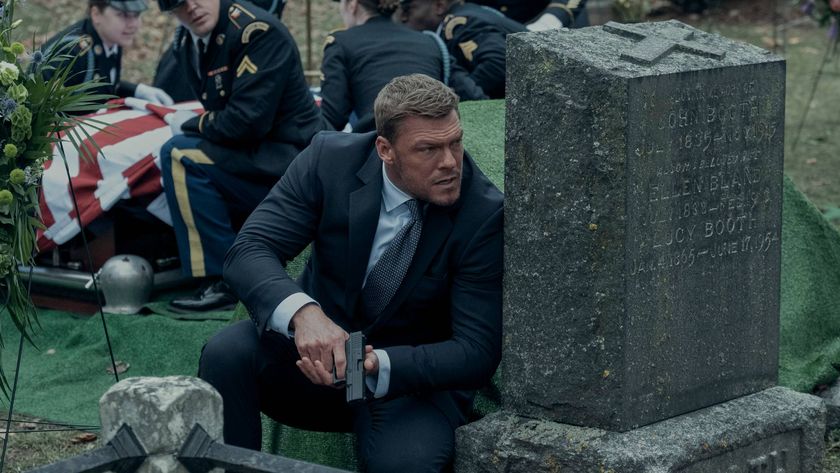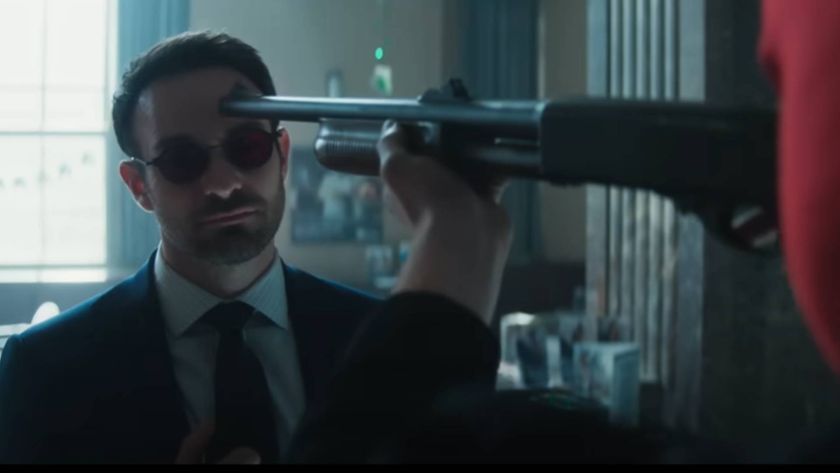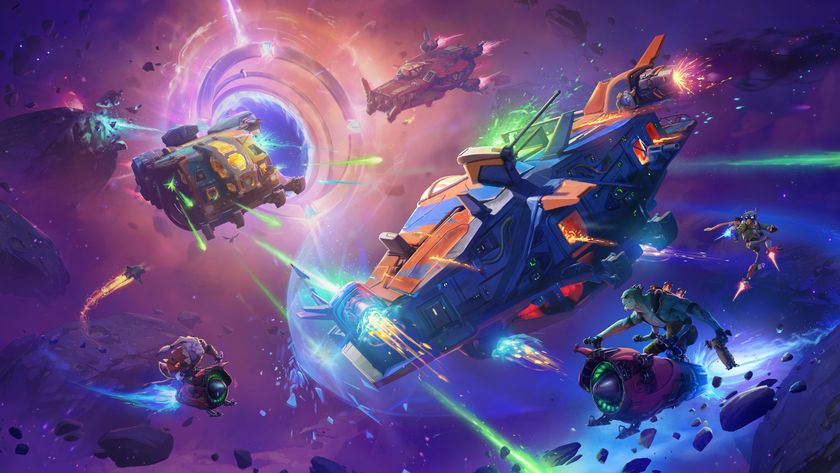Kingdom Hearts at 20: How a Mickey Mouse RPG pitch spiraled wildly out of control
Director Tetsuya Nomura charts the making of Square's iconic RPG as Kingdom Hearts celebrates its 20th anniversary

It began in an elevator. Like those urban legends involving film sets being haunted or actors improvising iconic lines in classic movies, a Disney executive and Square's Shinji Hashimoto, who once operated out of the same complex, supposedly laid the groundwork for the creation of Kingdom Hearts in one elevator trip.
And like any of the best urban legends, some of the details are a bit too fanciful. "The conversation in the elevator was more along the lines of 'It would be great to do something together some time' and was not actually a formal idea proposal," explains the game's director, Tetsuya Nomura. "It all started with Mr [Shinji] Hashimoto and some people at Disney discussing that it would be good to do something together and apparently the idea of making a Mickey Mouse RPG came up in his initial conversations with the heads of development at the time."
Nomura, who is very well known to Final Fantasy fans for his distinctive character designs from Final Fantasy 7, 8, 10 and 13, which undoubtedly influenced an entire generation of Japanese and American developers, relished the challenge of tackling such a treasured intellectual property. "However, this was thought to be quite a difficult prospect and when I heard about it I had already come up with the basic idea for Kingdom Hearts so I put my hand up and asked if I could be given responsibility for this project."
- The Making of Final Fantasy 7 Rebirth: "I thought: if we just reproduce the original game with no changes, it will feel nostalgic, but not exciting"
- "We would look at all the American RPGs and the JRPGs at the time and just go, 'Right, if they're doing it, we're not": Peter Molyneux and John McCormack talk the development of Fable 20 years on
Disney actually kicked things off with Kingdom Hearts by approaching Square with the idea. One simple elevator conversation soon grew into an ambitious vision of what would be Squaresoft's next big project – the initial idea of a Mickey Mouse RPG evolved into something more conceptual that united many Disney worlds together (with a few original creations) through an overarching narrative.
Nomura received suggestions from others working at Square, while his experience on Final Fantasy fed into the structure of the game design. "At the time I was given advice from one of my seniors in the company not to make the story itself too simplistic. I thought that the kind of story development logic with lots of foreshadowing type scenes and mysteries was very much a characteristic of the Final Fantasy series and that this would also be a good kind of structure to use for Kingdom Hearts as well."
Between Worlds

In Kingdom Hearts, young island-dweller Sora, troubled by strange dreams of lingering shadows, travels between Disney lands, encountering many recognisable characters from the films while searching for his missing friends. Some of the locales were obvious choices, like Agrabah from Aladdin or the Kingdom of Atlantica from The Little Mermaid, yet some nicely eclectic ones fed into the game's scope, too, like The Nightmare Before Christmas. Nomura had a philosophy over which environments made the cut.
"The main condition for picking worlds was that none of them overlapped in terms of feel or atmosphere so there would be a good variation in the game," says Nomura. "I am particularly fond of the Nightmare Before Christmas world (Halloween Town) from the first game. I thought that this would throw the player a real curveball and surprise them with its inclusion. I am always thinking about doing surprises like that."
Sign up to the 12DOVE Newsletter
Weekly digests, tales from the communities you love, and more
Indeed, the sequel would later throw in a gorgeous Steamboat Willie level, Tron scenario, and even one based on the Pirates Of The Caribbean. What was interesting about the use of the worlds was the way a mini-storyline played out within each that was faithful to the source. Sora, Donald Duck, and Goofy, travelling through each land to connect them together using the hero's mystical Keyblade weapon, were essentially supporting spectators to these well-knit Disney vignettes.
"Sora is supposed to be a Disney-esque character," says Nomura when we ask about the creation of the series' protagonist. "I was very aware of this in his colours, the form of the character, and his bright and cheery personality. For the Keyblade, I wanted to give him a weapon that had a non-aggressive motif to it so I settled on the idea of a key that also ties in with the story itself."
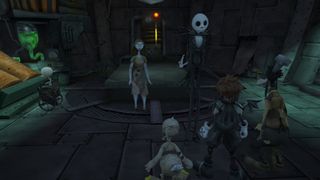
"There were things that Disney would not permit, but I can't really talk about those."
Tetsuya Nomura, Square Enix
Nomura didn't feel he had to change his artistic style to make the character designs fit with Disney – at the time, he cited how Donald Duck and Tarzan were visually very different despite being Disney characters, meaning there wasn't too much of a struggle in finding a unifying visual language. "I did not feel any particular difficulties really. For example, in the underwater world there are no characters who swim around wearing regular clothes, so to fit with that I simply changed the characters' costumes around a bit. It was only really minor adjustments and obvious things like this."
Greater challenges lay in weaving Sora's story around the Disney worlds, however, those relating to Disney's restrictions on how its properties may be used. "Because you are dealing with other people's IPs there are naturally bound to be limits in place and it took some work to get around those so that the player does not feel inhibited by them."
Nomura reflects positively on his experience working with Disney, however. "In working together with Disney I was able to experience things that I could not normally do in my job," he says, mentioning voice acting as an example. He doesn't discuss what he wasn't allowed to put in the game. "Of course there were things that they would not permit, but I can't really talk about those."
Interestingly, Donald Duck and Goofy carry a staff and shield respectively as Disney wouldn't permit them to carry swords, or other violent weaponry. Each property had a set of guidelines and they weren't allowed to add anything that wasn't already in the films – Nomura's team did get permission to adapt the characters for certain worlds after Disney saw the artist's designs for aquatic versions of Donald and Goofy, however, and the Nightmare Before Christmas world pushed that transformation into creepier territory. Disney's animators even met with the Squaresoft team to help them understand their process in what were dubbed 'chalk talks'.
The missing castle

The effort – which saw some of Squaresoft's team watching a wide variety of Disney videos for months in research – paid off. Kingdom Hearts is a faithful work that translates the 2D styling of each licence perfectly into 3D, with the delicate animated touches helping make that transition exciting for seasoned filmgoers and fans. Kingdom Hearts was a treat for anyone who grew up with stacks of discoloured Disney VHSs beneath their tellies.
In early videos for the game, a Disney castle level appeared to be among the worlds open for exploration – we asked Nomura if it, which appeared in Kingdom Hearts 2, or anything else, had to be cut from the game. "Essentially I managed to do everything that I wanted to do from the start of that project," Nomura says. "I think that there is a bit of a misunderstanding out there, but the footage you talk about of Sora running around the Disney castle was simply early test footage and was not an actual scene that was originally included in the game and then cut out later."
Not that the arc of the game was short on content at about 50 hours in length. Being an action RPG, one of the first to have mainstream appeal, there were plenty of reasons to revisit the worlds, and, with a combat system that gradually grew in complexity, Kingdom Hearts always feeds the player with new things to see. Aside from a difficult camera, mapping spells to the face buttons was a workable system, while the option to change the behaviour of your party members, Donald, Goofy, and the guest characters on each world, like Beast, Ariel, or Peter Pan, offered a good capacity for strategy.
Having three characters in play created a few logistical headaches for the team. "Sora can move freely but the other members have to be able to follow him wherever he goes, so the kind of problems we had are the typical type that you get in this sort of game where they get caught up on objects and can't keep up with the player [and so on]."
Expanding the toybox
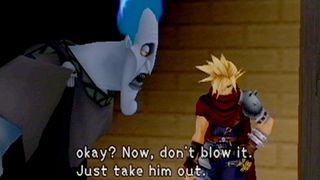
A borrowed staple of Final Fantasy, summoned creatures, allowed for even more novel guest appearances, and were manifested in the form of Disney characters like Genie from Aladdin, Mushu from Mulan, Tinker Bell from Peter Pan, and Nomura's personal favourite, Simba from The Lion King. Final Fantasy characters, meanwhile, made significant appearances throughout the story. Nomura explains how that came to be. "Basically we needed to have NPC characters to fill the worlds that were original designs and did not have Disney motifs and if those characters were also new original characters they would not leave such an impression on the player so I decided to have Final Fantasy characters as guest stars."
Characters from Final Fantasy 7, 8, and 10 all appeared in a variety of capacities (see 'That Old Gang of Mine'). It was a fairly curious choice when you considered that grumpy Final Fantasy 8 River Phoenix-inspired Squall essentially lived round the corner from duck triplets Huey, Dewey, and Louie, but this sort of contrast is something that fans of the series responded positively to; interestingly, all the characters chosen were ones that only Nomura himself had designed, with pre-Final Fantasy 6 figures left alone (though in Kingdom Hearts 2, the inclusion of Vivi from the non-Nomura Final Fantasy 9 expanded that remit a little).
In many cases, too, they'd received an extensive redesign from Nomura and were voiced for the very first time. Some of the casting choices were interesting, others contentious; David Boreanaz, known best for his role as Angel in Buffy and its spin-off at the time, voiced the similarly characterised Squall. 'N Sync's Lance Bass had the role of Sephiroth (he was replaced in the sequel), singer Mandy Moore played Aerith, and US soap actor Steve Burton arguably put in the strongest work with his moody rendition of Cloud, which led to him reprising the role in Final Fantasy 7 movie Advent Children and six subsequent games.
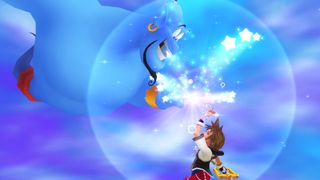
"Final Fantasy is like a toybox... and I carried that philosophy into Kingdom Hearts as well"
Tetsuya Nomura, Square Enix
"I felt that if we had lots of new original characters it would take time until they were all recognised and wanted for the player to be aware of the protagonist Sora first and foremost here," Nomura explains. But really, aiming so high with the casting was just conducive to one of Kingdom Hearts' goals overall, to tackle the various Disney licences with industry-best production values. In terms of voice actors, that credibility spread to James Woods reprising his role as Hades, Gilbert Gottfried tackling Iago from Aladdin, and The Simpsons' Dan Castellaneta doing a fine impression of Robin Williams' Genie. Many of the original actors from the films returned to join the game's massive cast.
It's easy to be cynical about a product as relentlessly corporate on the surface as Kingdom Hearts, yet there were more than a few memorable curios in the design, too. Gummi ships, essentially a way to travel between each world through tunnels of enemies, were essentially Lego spacecraft that the player could completely customise in colour and composition.
Nomura explains their origins. "I personally really like toy building blocks and wanted to find a way to include them in the game. I was once told that a core principle for developing Final Fantasy was that Final Fantasy is like a toybox in that it has so many different cool things packed into it and I carried that philosophy over into Kingdom Hearts as well. So I decided to use building blocks and also incorporate a shooting game style section." That creativity stretched to narrative design through gameplay, as well. One of the smarter moments of the story sees Sora lose his Keyblade weapon to rival Riku, with Donald and Goofy abandoning the character, too, acting like the treacherous anthropomorphs they are. What happens instead is that players team up with a dejected Beast (from Beauty & The Beast fame), with Sora stuck with a wooden sword that does no damage to enemies.
Lost to time

This removal of power changes the dynamic of Kingdom Hearts completely – and its purpose was for the peaceful characterisation of the game's hero, according to Nomura, who reflects fondly on the decision to do this. "I wanted to make the player aware that their character is not an all-powerful hero but is actually just a regular boy," he says. "This scene was put in so that the player would be made aware of the fact that Sora can only fight when taking up the special Keyblade and when aided by his friends, not just through the back story but in the actual gameplay as well."
Some of the post-game content was inspired, too – a boss fight with the Ice Titan from Hercules, and, much like the Dark Aeons from Final Fantasy 10, some fairly nasty bosses waiting for Sora upon returning to Big Ben in Neverland and the desert outside Agrabah. But the best inclusion? Sephiroth from Final Fantasy 7, who arrives out of the sky in a dramatic fashion, before an instrumental rendition of One-Winged Angel kicks off a ludicrously hard encounter. "I wanted to have a hidden boss that you could fight after clearing the main game and thought that a very surprising character would be good for this so I decided to use Sephiroth who had not been seen since the original FF7 and was well known among fans," says Nomura when we ask him about one of the series' nastiest antagonists. "Sephiroth is also perceived as being a very strong opponent so I thought he fit very well in this role."
Final Fantasy fans would seek out Kingdom Hearts, then, for that purpose, yet Kingdom Hearts also successfully drew in Disney fans who had never played a Squaresoft RPG before. If you need any better measure of the franchise's success, Kingdom Hearts 2 outsold Final Fantasy 12 in North America, hence why the third title in the series, announced by Square Enix at E3 2013 an obscene seven years after the second game was released, was of massive importance to the company.
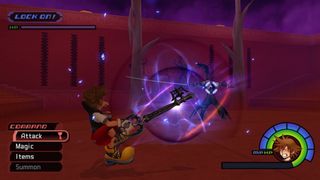
For the 2013 rerelease, Kingdom Hearts 1.5 HD ReMix, Nomura's intention was to pick up new fans in advance of Kingdom Hearts 3. "The 'Dark Seekers' story arc will reach its conclusion in the upcoming Kingdom Hearts 3 and this HD remake version is being done with that situation very much in mind. So personally, I feel more that this is being made for the sake of the next new chapter than to revisit something old… I really want for as many people as possible to play KH3, so I made 1.5 with that in mind."
Porting it wasn't an easy task, with many of the PS2 assets sadly being elusive. "The original data no longer existed so it was hard, yes, but despite that, I think that the supreme effort put in by all of the staff on the team stopped it feeling so tricky. Even when comparing it to other HD remakes of other titles I really feel that the Kingdom Hearts staff gave a huge amount of effort."
Kingdom Hearts remains the best in the series –the original presented players with unambiguous forces of light and dark, of nostalgia for Disney's strongest animated works, and a nicely absurd slice of indulgence for Square's fans. A game that began life in an elevator – an appropriately odd origin for such a bizarre and beloved title.
This feature originally ran in the pages of games™ magazine in 2013. In the years since, the long-awaited sequel finally released. Read our Kingdom Hearts 3 review here.






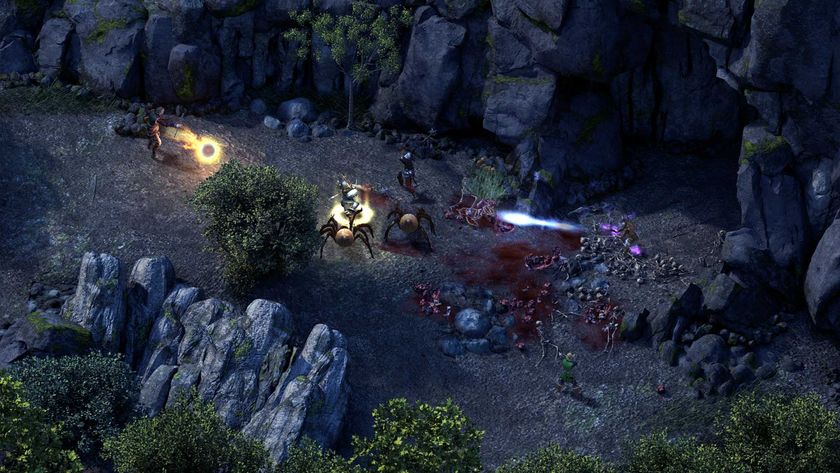
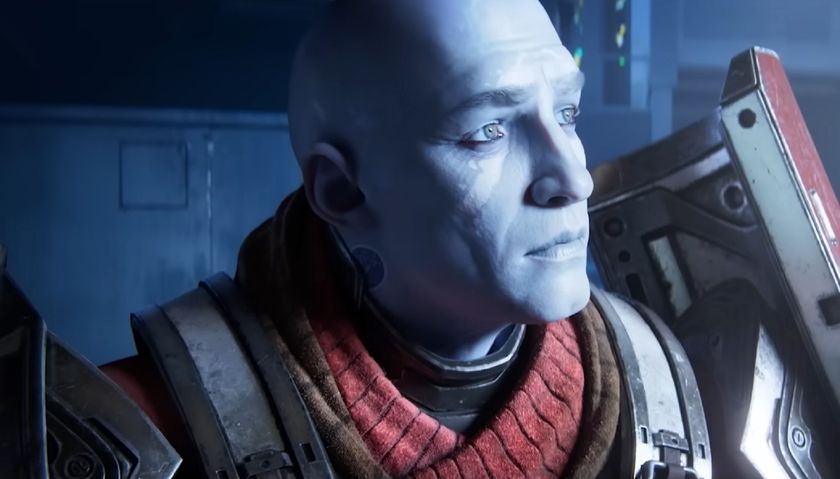


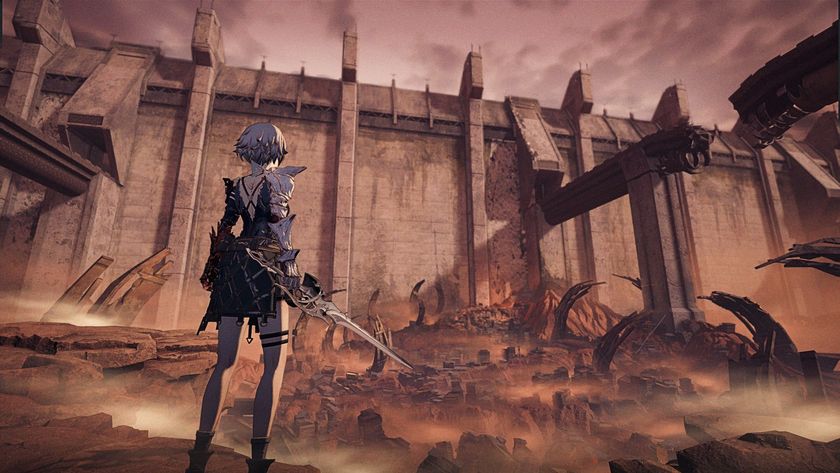








10 years later, in a post-Baldur's Gate 3 and Avowed world, Obsidian is giving its own throwback CRPG Pillars of Eternity a turn-based combat mode

When Destiny 2 "weekly active users dropped lower and faster than we'd seen since 2018," Bungie assembled an A-Team to put out some fires: "We needed to do something"
